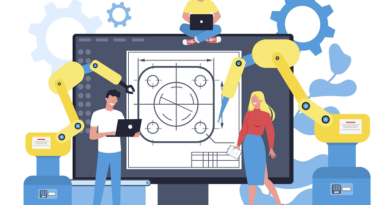How to Transition from Manual Operations to NEMT Software
Managing a non-emergency medical transportation (NEMT) business manually can be overwhelming, especially as your fleet and trip volume grow.
Manual operations, whether on paper or in basic spreadsheets, can lead to inefficiencies, errors, and missed opportunities. Transitioning to NEMT software streamlines your operations and helps you scale your business efficiently.
This step-by-step guide will walk you through moving from manual operations to digital NEMT software, ensuring a smooth transition for your business.
1. Evaluate Your Current Operations
Before you begin the transition, it is important to assess your existing processes and identify areas where your manual system is failing.
Identify Pain Points: Are scheduling errors causing delays? Are billing mistakes slowing down payments? Make a list of inefficiencies that need to be addressed.
Set Clear Goals: Define what you want to achieve with NEMT software. Whether it’s reducing operational costs, improving customer service, or automating scheduling, having clear objectives will guide the transition process.
Assess Your Business Needs: Evaluate which software features are most important for your business. Do you need real-time tracking, route optimization, or billing integration? Knowing your needs will help you choose the right software.
2. Research and Select the Right NEMT Software
The next step is to research the different NEMT software options available and select the one that best fits your business.
Compare Software Options: Look for software that offers the features you identified as essential for your business. Consider factors such as pricing, scalability, and user reviews.
Request Demos and Trials: Try free demos or trial versions to see how the software works. This hands-on experience will help you determine if it meets your operational needs.
Consult with Stakeholders: Get input from your team—dispatchers, drivers, and billing staff. Their feedback will ensure the software will be user-friendly and beneficial to everyone involved.
Choose Scalable Software: Your business will grow, so it’s essential to select software that can grow with you. Ensure the software can handle additional vehicles, drivers, and trip volumes as your business expands.
3. Prepare Your Team for the Transition
Transitioning from manual to digital operations requires careful planning, especially regarding training and supporting your team.
Communicate the Benefits: Explain to your team why this transition is happening and how the new system will make their jobs easier. Clear communication can reduce resistance to change.
Provide Training and Support: Organize training sessions to ensure your staff is comfortable using the new software. Offering ongoing support is also essential for addressing any challenges during the transition.
Assign Transition Roles: Designate a project manager or transition team to oversee the implementation. This ensures that there’s accountability and leadership throughout the process.
4. Migrate Your Data
One of the most crucial steps in the transition is migrating your existing data from manual records to the new NEMT software.
Organize and Clean Existing Data: Review your current data to remove outdated or incorrect information. This step ensures that only accurate data is migrated into the new system.
Digitize Paper Records: If you’re still using paper records, now is the time to digitize them. Scan important documents and enter trip, client, and driver information into the system.
Work with the Software Provider: Many software providers offer data migration assistance. Collaborate with them to ensure the migration process is smooth and error-free.
5. Set Up and Customize the Software
Once your data is migrated, you must configure the software to match your business operations.
Configure the Software to Match Your Workflow: Customize scheduling, dispatching, and billing settings to ensure the software fits your specific processes.
Integrate with Existing Systems: If you’re using other tools like accounting software, ensure that the NEMT software integrates with them for a seamless flow of information.
Test the System: Schedule a few trips through the system to conduct a pilot run. This allows you to identify configuration issues and adjust before fully transitioning.
6. Gradually Transition to Full Use
Instead of switching everything over at once, it’s often better to ease into using the new system.
Start with Key Functions: Start by using the software for essential tasks like scheduling and dispatching. This will allow your team to get comfortable with the system before using it for more complex functions like billing and reporting.
Monitor Progress and Address Issues: Monitor the software’s performance and gather feedback from your team. Address any challenges they encounter and make necessary adjustments.
Gradually Phase Out Manual Processes: As your team gets used to the software, you can start phasing out manual processes like paper scheduling and invoicing, reducing the risk of overwhelming your staff.
7. Review and Optimize Post-Implementation
After the complete transition, review how the software performs and make necessary optimizations.
Gather Feedback from Your Team: Check in with your team to see how they adjust to the new system. Are there any additional training facilities? Are there features they’re not using entirely? This feedback can help improve operations.
Analyze Performance Metrics: Use the software’s reporting tools to track key metrics such as trip completion rates, on-time performance, and customer satisfaction. These insights can help you identify areas for improvement.
Make Adjustments: Fine-tune the system settings or workflows based on feedback and performance data to ensure you get the most value from the software.
8. Plan for Ongoing Support and Updates
Even after the transition, ongoing support is crucial to keep the software running smoothly.
Ensure Ongoing Software Support: Work with your software provider to set up a support plan that includes troubleshooting, updates, and regular check-ins.
Keep Your Team Updated on New Features: As your software evolves, ensure your team is trained on new features and updates to continue operating efficiently.
Plan for Future Scaling: As your business grows, reassess your software needs to ensure it continues to meet your operational goals.
Conclusion
Transitioning from manual operations to NEMT software can significantly improve your business’s efficiency, accuracy, and scalability.
Following a structured, step-by-step process ensures a smooth transition and that your team fully embraces the new system.
The benefits of adopting NEMT software—such as automation, real-time tracking, and improved customer service—far outweigh the challenges of the transition process.
If you’re ready to streamline your NEMT operations, research the right software and take the first step toward a more efficient, future-proof business.




